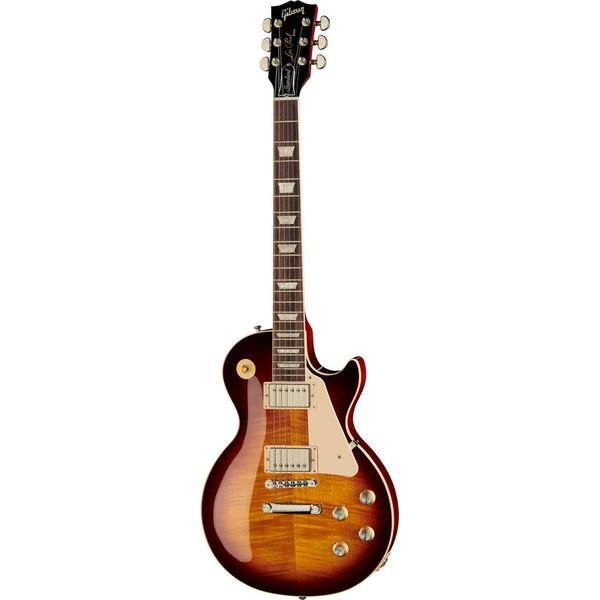Alright, so you’re eyeing the Gibson Les Paul Standard 60s. Can’t say I blame you!
Whether you’re chasing that classic rock tone, looking for a stage-ready showpiece, or just trying to justify another addition to your growing guitar collection (it’s a need, not a want, right?), this guitar demands attention.
But what makes it so special? Is it worth its hefty price tag? Let’s break it down.
How Good Is Gibson Les Paul Standard 60s?
The Gibson Les Paul Standard ’60s is basically Gibson saying, “Remember when rock was king? Yeah, we do too.”
This isn’t just a guitar; it’s a love letter to the most exciting decade in music history. It screams vintage from headstock to tailpiece, with just enough modern touches to keep things reliable and player-friendly. And honestly, I love that vibe.

And let’s be real—half the reason you’re here is probably that Bourbon Burst finish. It’s okay; I get it. It’s like the guitar equivalent of a sports car. But it’s not just about looks.
The tonewoods, the electronics, the neck profile—everything about this guitar is designed to deliver that timeless Les Paul sound with a smooth, playable edge.
Oh, and did I mention it’s Made in the USA? That’s a flex worth noting.
Materials: Why the Right Wood Matters
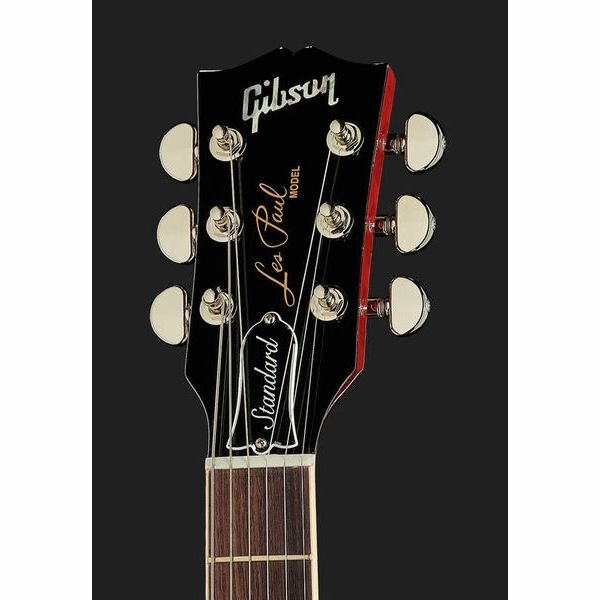
Let’s start with the basics: what’s this thing made of? You can’t just slap a few pieces of wood together and call it a Les Paul. Gibson knows this, and they’ve gone all-in on the tonewoods to give this guitar its signature sound.
Body: Mahogany for Days
At the heart of every great Les Paul is mahogany, and the ’60s Standard is no exception. Mahogany is warm, resonant, and packed with sustain.

Play a power chord, and it’ll ring out long enough for you to pour a coffee and come back. It’s what gives this guitar that thick, meaty tone that Les Pauls are famous for.
Top: Maple, the Bright Side
Sitting atop that mahogany slab is a maple cap. This isn’t just for aesthetics (though, let’s admit it, the flame top is stunning). Maple adds brightness and clarity to balance the mahogany’s warmth. It’s the reason your tone stays articulate, even when you’re cranking the gain.
Neck: Slimmer, Faster, Better
The mahogany neck keeps the sustain train rolling, but the real star here is the ’60s slim taper profile. Unlike the chunky necks of the ’50s models, this one feels sleek and fast.
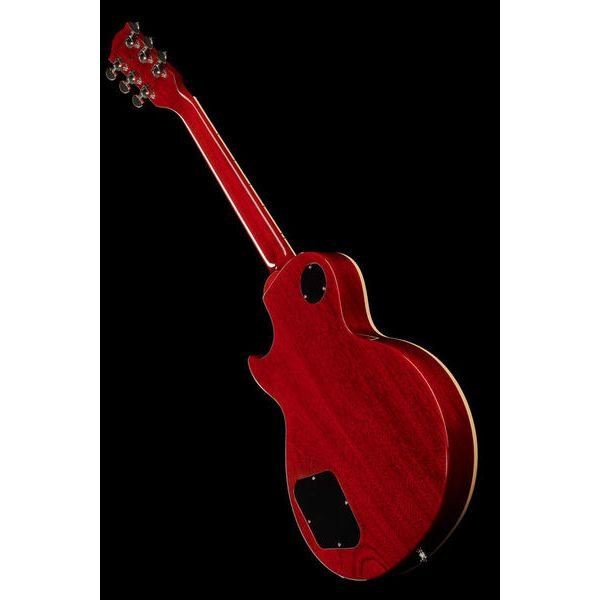
It’s perfect for players who want to glide through solos without feeling like they’re wrestling a log. Honestly, your hands will thank you.
Fingerboard: Smooth as Butter
The rosewood fingerboard is smooth, responsive, and adds a touch of warmth to the tone. And let’s not forget the cream binding—it’s a small detail, but it elevates the whole aesthetic. Pair that with the trapezoid inlays, and you’ve got a fingerboard that’s as beautiful as it is functional.
Worth reading: Rosewood vs Pau Ferro Fingerboards
Build Quality: Flawless Execution
When you’re spending this much on a guitar, you expect perfection—or at least something close. And the Gibson Les Paul Standard ’60s delivers. From the nitrocellulose finish to the hand-finished frets, this guitar feels like a premium instrument in every way.
Finish: Bourbon Beauty
Let’s take a moment to appreciate that Bourbon Burst finish. Photos don’t do it justice. In person, it’s rich, deep, and full of character.
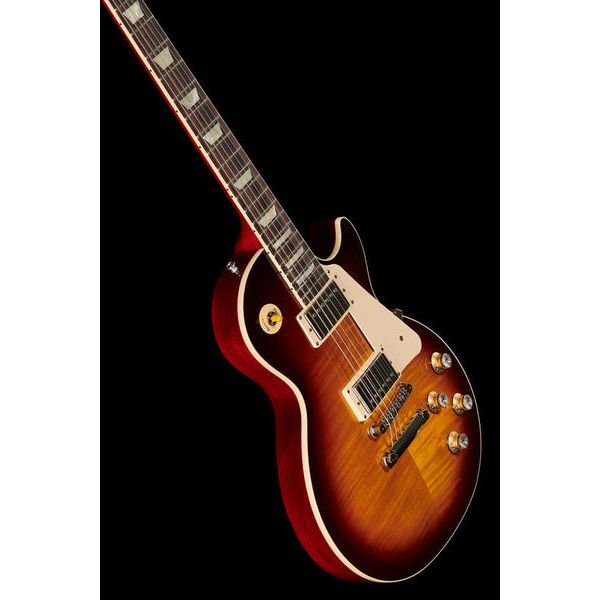
The nitrocellulose lacquer gives it a glossy sheen that looks stunning under stage lights, and over time, it’ll develop a unique patina that tells your story. It’s like fine wine—it just gets better with age.
Frets: Cryogenic… What?
The 22 medium frets are cryogenically treated, which sounds like something out of a sci-fi movie, but it’s legit. This process makes the frets harder and more durable, so they’ll stand up to years of bends, slides, and abuse. And the fretwork itself? Smooth, precise, and a joy to play on.
Bridge and Tailpiece: Rock-Solid Stability
The aluminum Tune-O-Matic bridge and stop bar tailpiece are lightweight but sturdy, ensuring your tuning stays locked in. Whether you’re bending strings like a madman or digging in with aggressive rhythms, this hardware can take it.
Electronics: The Soul of the Les Paul
Alright, let’s talk pickups. The Les Paul Standard ’60s comes equipped with a pair of Burstbucker 61s—a 61R in the neck and a 61T in the bridge. These aren’t your average humbuckers.
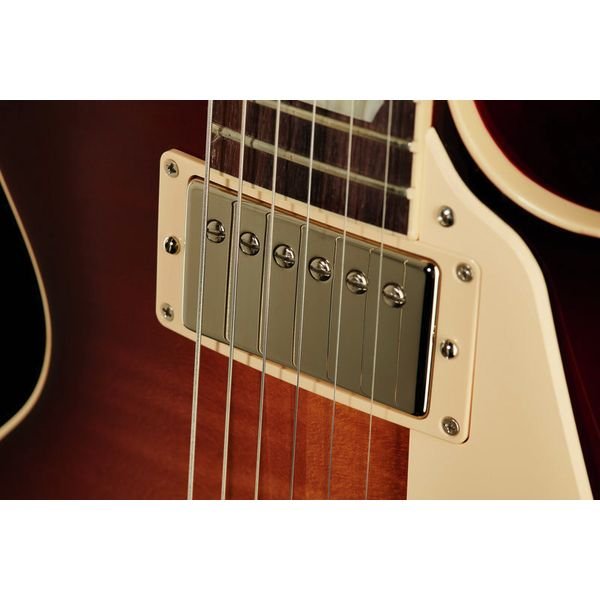
They’re designed to replicate the iconic PAF (Patent Applied For) pickups from the 1950s and ’60s.
Neck Pickup: Smooth and Sultry
The 61R in the neck is warm and creamy, making it perfect for soulful solos and jazzy chords. Roll the tone back a bit, and you’re in smoky blues territory. It’s the kind of sound that makes you want to play slow, deliberate licks that hit you right in the feels.
Bridge Pickup: Bright and Bold
The 61T in the bridge is a different beast. It’s punchy, articulate, and brings plenty of bite to the table. Whether you’re playing crunchy power chords or soaring lead lines, this pickup cuts through the mix like a hot knife through butter.
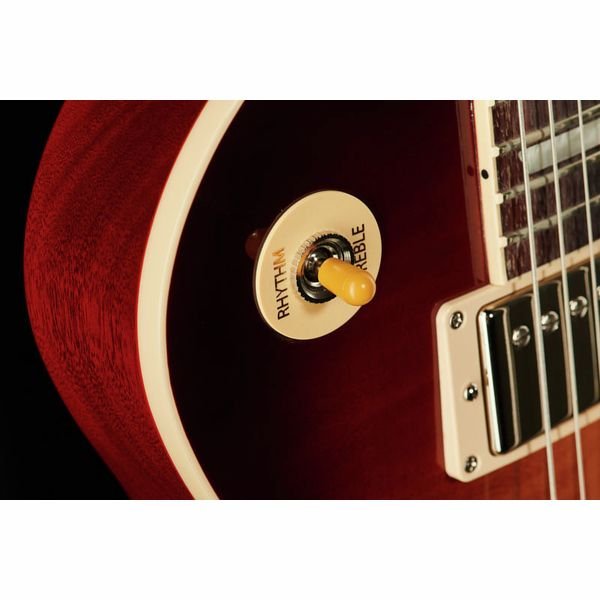
Wiring: Orange Drops for the Win
And then there’s the wiring. Gibson went the extra mile with handwired circuitry and Orange Drop capacitors. This ensures smooth, consistent tone control, whether you’re rolling back the volume for a clean sound or cranking it for full-on distortion.
No mud, no loss of clarity—just pure tone.
Sound: What Does It Actually Sound Like?
Let’s get to the good stuff—how does it sound? In a word: phenomenal. The Les Paul Standard ’60s nails that classic Gibson tone, with a dynamic range that can handle everything from jazz to metal.
Here’s a really good demo that you NEED to hear.
Summing up:
- Clean tones: Warm, rich, and articulate. Perfect for jazz, blues, or clean arpeggios.
- Overdriven tones: Fat and crunchy, with endless sustain. Think classic rock riffs and bluesy solos.
- High gain: Tight, punchy, and aggressive. The Burstbuckers can handle modern rock and metal just as well as vintage tones.
’60s vs ’50s: What’s the Difference?
Here’s the million-dollar question: should you go for the ’60s model or the ’50s? It really comes down to personal preference, but here are the key differences:
- Neck profile: The ’50s model has a chunky neck, while the ’60s is slim and fast. If you value playability, the ’60s is the way to go.
- Pickups: The ’50s pickups are a bit warmer and mellower, while the ’60s are hotter and brighter. Think about your tone preferences.
- Weight: Both are hefty, but some ’50s models can feel a tad bulkier.
You can also watch this comparison below to make your own choice 😉 both are great though!
My Thoughts and Rating

I’ll cut to the chase: I love this guitar. It’s got the tone, the looks, and the playability to back up its hefty price tag. The slim neck profile is a game-changer, and the Burstbuckers deliver some of the best tones I’ve heard in a Les Paul.
I’d give this guitar a 9.5 out of 10.
Why not a perfect 10? Well, it’s a Les Paul, so it’s heavy, and it’s not exactly cheap. But those are minor gripes in the grand scheme of things. If you’re serious about your tone, this guitar is worth every penny.
For those who want to know about my recommendations, visit my YouTube channels! I run two – Best Guitars Now in English and Strefa Gitar which is in Polish.
Pros and Cons
Pros:
- Iconic tone: Warm, versatile, and unmistakably Les Paul.
- Slim neck profile: Comfortable and fast.
- High-quality build: Feels premium because it is.
- Stunning finish: Bourbon Burst is jaw-dropping.
Cons:
- Price: It’s an investment, no doubt.
- Weight: Not for the faint of back.
- Lack of modern features: No coil-splitting or fancy tricks.
FAQ
1. Is it good for beginners?
Not really—it’s a pro-level guitar. But if you’re committed, go for it!
2. Does it come with a case?
Yes, a premium hard case is included.
3. Can it handle heavy distortion?
Absolutely. The Burstbuckers thrive under high gain.
4. What amps pair best with it?
Tube amps bring out its full potential.
5. Is the slim neck good for small hands?
Yes, it’s super comfortable and easy to play.
6. Does it stay in tune?
Yep! The hardware is rock solid.
Final Thoughts
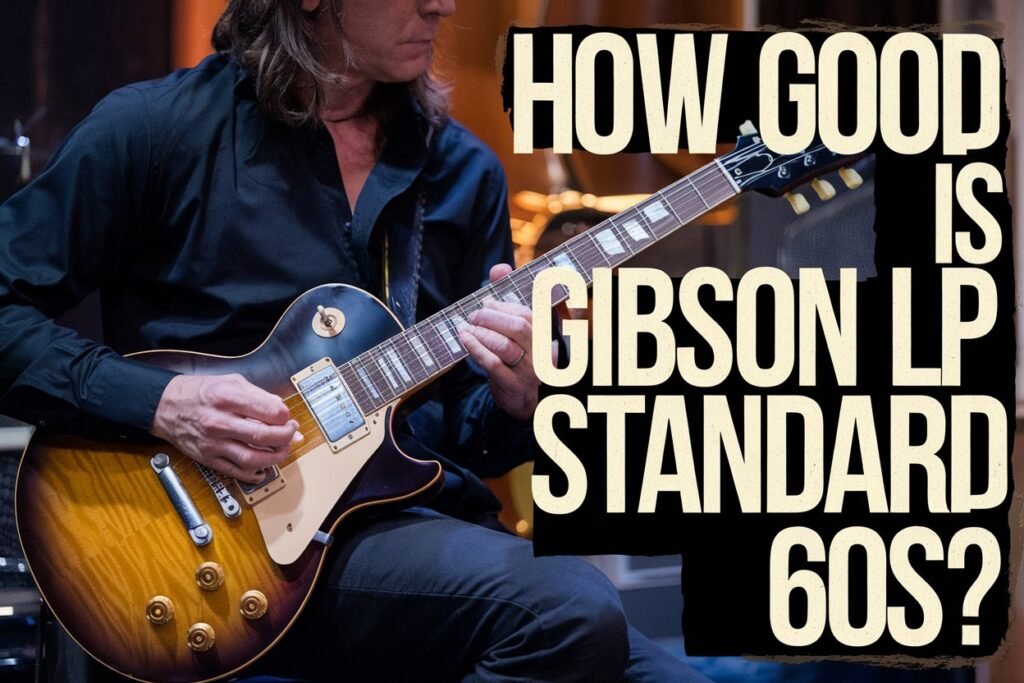
The Gibson Les Paul Standard ’60s is everything a Les Paul should be: gorgeous, versatile, and full of tone. It’s a tribute to rock’s golden era with enough modern touches to make it a dream to play.
Is it perfect? Almost! It’s just sooo expensive 😉
If you’ve got the cash and the passion, this guitar is a no-brainer. Just don’t blame me when you can’t stop playing it. 🙂

